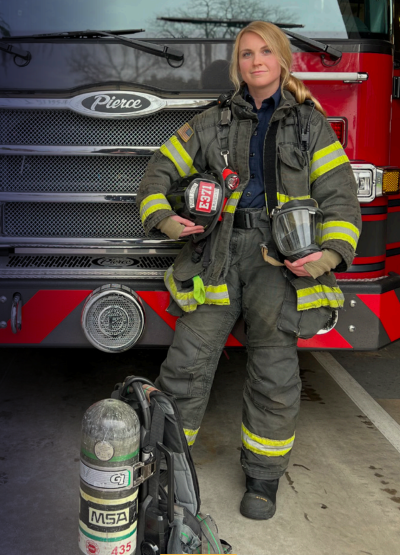
We are evaluating the performance of gloves to find the best option to reduce Firefighter's exposure to carcinogens during clean-up operations. (Photo courtesy of Healthy In, Healthy Out)
UW Glove Usability Study
UPDATE, October 2023:
We have completed the recruitment and testing phase of the study. Thank you to all the volunteers for your support! We are analyzing the results and expect to share our findings in December 2023. Thank you again!!!
This study focuses on the trade-off between protection and usability by comparing barehanded performance with protective glove combinations during clean-up activities. The testing will analyze grip while twisting, grip while pulling, and the ability to use tools and hardware by simulating actions conducted in the field. The test results, as well as feedback about glove fit and comfort, will be shared with the Washington State Council of Fire Fighters and integrated within the existing Healthy In, Healthy Out best practices.
What are some of the statistics related to cancer in the fire service?
Cancer is a threat to firefighter health and safety.
- A recent study by the International Agency for Research on Cancer (IARC) classified the occupation of firefighting as carcinogenic to humans (Group 1) (IARC 2022)
- Cancer caused 66 percent of the career firefighter line-of-duty deaths from 2002 to 2019, according to data from the International Association of Fire Fighters (IAFF)
- Firefighters have a 9 percent higher risk of being diagnosed with cancer and a 14 percent higher risk of dying from cancer than the general U.S. population, according to research by the CDC/National Institute for Occupational Health and Safety (NIOSH)

What are PAHs? Why is exposure reduction important?
Polycyclic aromatic hydrocarbons (PAHs) are components of incomplete combustion. Firefighters are exposed to PAHs during fire suppression activities.
- Firefighters wearing full protective ensembles may still absorb PAHs into their bodies.
- PPE best practices like “decon” are a key strategy to reduce PAH exposures.
Glove use choice during clean-up activities may increase PAH exposures; however, the extent and importance of this is not well understood.
Working in collaboration with Central Pierce Fire & Rescue, Puget Sound Regional Fire Authority, and other WA fire departments, this project will build upon previous efforts to provide specific glove use best practices to promote long-term firefighter health.
Funding and support for this project has been provided by the State of Washington, Department of Labor & Industries, Safety & Health Investment Projects.